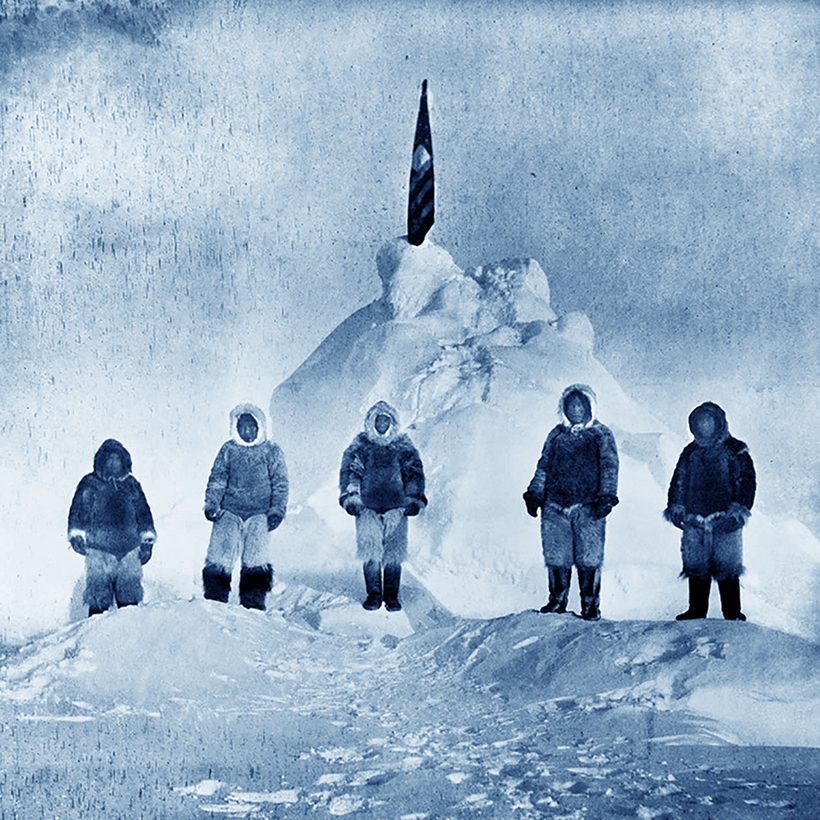“Exploration is the physical expression of the Intellectual Passion,” Apsley Cherry-Garrard wrote at the conclusion of The Worst Journey in the World, his classic account of Captain Robert Falcon Scott’s failed bid to claim the South Pole—a work generally regarded as the finest book on exploration ever written.
Not so, according to Matthew Lockwood, who argues in his new book, Explorers: A New History, that our tendency “to think of explorers, unlike mere travelers, as selfless figures who voyage in pursuit of knowledge and adventure” is simplistic and ignores the historic entanglement of exploration with imperialism. Rejecting “the heroic image” of the explorer as a “khaki-clad adventurer hacking his way through a tangled jungle” that haunts popular culture, he observes that “it is tempting to discard the terms ‘discovery’ and ‘exploration’ altogether, to consign studies of explorers to the dustbin of history.”
And yet, he allows, “many still want heroes.” His book offers a solution to the dilemma that he presents, an argument for expanding the definition of “explorer” to include persons from any walk of life or part of the globe who are drawn to travel to new places for any number of reasons—need, curiosity, desire for fame or profit, political advantage, the desire to immigrate, or as a guide to other explorers. The aim of his book is to enlighten the reader as to the range of “new explorers” and to “reimagine the idea of exploration itself.”
Putting quibbles aside—how many people today think of explorers as khaki-clad adventurers, and are we really tempted to consign Mallory, Cook, and Shackleton “to the dustbin of history”?— this is a big mission for a very short (some 42,000 words long) book.
Lockwood’s method is to present a series of brief sketches of an array of individuals who for a variety of reasons pursued adventurous travels. These are not obscure names, and they include, for example, Admiral Zheng He (among other things, the subject of Gavin Menzies’s best-selling 1421: The Year China Discovered America), Pocahontas, Mary Wortley Montagu, and the celebrated Polynesian navigator Tupaia (subject of an excellent biography by Joan Druett, not included in Lockwood’s bibliography).
One immediate problem is that most character sketches are so brief that they necessarily omit much that is salient. An example is Omai (more properly Mai) from the Tahitian island of Raiatea, who is briefly profiled along with other Polynesian adventurers. Mai had joined Captain James Cook’s second expedition and returned with it to England, where he was fêted, celebrated, and lavishly supported. Two years later, Mai returned with Cook’s third voyage to Tahiti, having helped, as Lockwood memorializes him, fill in blank spots on the map of the South Pacific through his imagination and navigational skills.

From the scant 11 lines devoted to Mai’s story, the reader is left with the impression that the Raiatean had ventured abroad solely from curiosity and a love of adventure. In fact, his own agenda was to acquire enough European firepower and weaponry—including a full-body suit of armor—to annihilate his Polynesian rivals. As Mai said to George III, when introduced to His Majesty, “Sir … I am your subject, come here for gunpowder to destroy the people of Bora Bora, our enemy.”
There are many gorgeous stories glancingly cited in Lockwood’s book, but few are opened up, since their real purpose is to illustrate his larger point. The result is often flattened characterizations and insufficient context.
One of the “new explorers” Lockwood evokes is Matthew Henson, a companion of Commodore Robert Peary’s in his 1909 bid for the North Pole. Henson is hardly unknown—most who know of Peary’s history know of and celebrate Henson. More to the point, re-examination of evidence from this expedition has led most historians to believe that neither Henson nor Peary ever reached the pole. Failure to “find” the pole in no way makes Henson less of an explorer, but to make no reference to the controversy is a startling omission.
As the succinct bibliography shows, all of Lockwood’s new explorers have been the subject of well-researched books or articles. Indeed, a striking feature to emerge from his own work is the extent to which the anointed Great Explorers recognized and paid tribute to the lesser-known personalities he presents.
“I feel a pleasure in recording … the name of Carlos del Pino,” Alexander von Humboldt wrote in his Personal Narrative of Travels to the Equinoctial Regions of the New Continent, “who, during the space of sixteen months, attended us in our course along the coasts, and into the inland country.”
Richard Burton and John Speke memorialized their lead guide, Sidi Mubarak Bombay, in their accounts of their search for the sources of the Nile, and their six guides were honored by the Royal Geographical Society with medals, as were David Livingstone’s primary African companions, Abdullah Susi, James Chuma, and Jacob Wainwright, who also “shaped Livingstone’s legacy by helping to edit his journals for publication.”
Others such as Francis Younghusband and Katherine and Robert Barrett, an American wife-and-husband team who traveled Central Asia, championed the local participants of their expeditions and worked to help them bring their own accounts to the world’s notice: the Barretts worked for 14 years to help Ghulam Rassul Galwan, of the Ladakh region in the Himalayas, who had guided their expeditions, write his memoir of his own extraordinary adventures.
Lockwood’s “new explorers” are not, then, less known because they were willfully edited out of narratives that did find successful lodgment in popular culture. Most “named explorers” became famous through books that they or colleagues wrote about their explorations; as Lockwood notes, “Tales told around the fire were ephemeral. But books were forever.”
Perhaps today it will require multiple Netflix series to make Lockwood’s compelling new explorers household names. In the meantime, we have the immortal books he cites in his bibliography for rewarding armchair exploration.
Caroline Alexander is the author, most recently, of Skies of Thunder: The Deadly World War II Mission Over the Roof of the World

